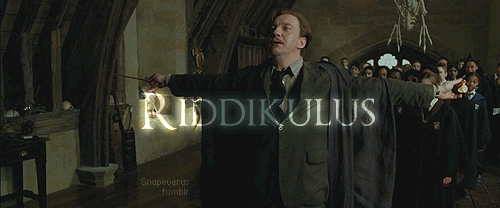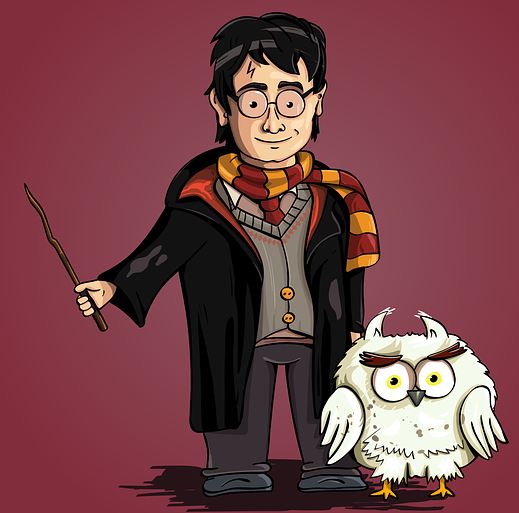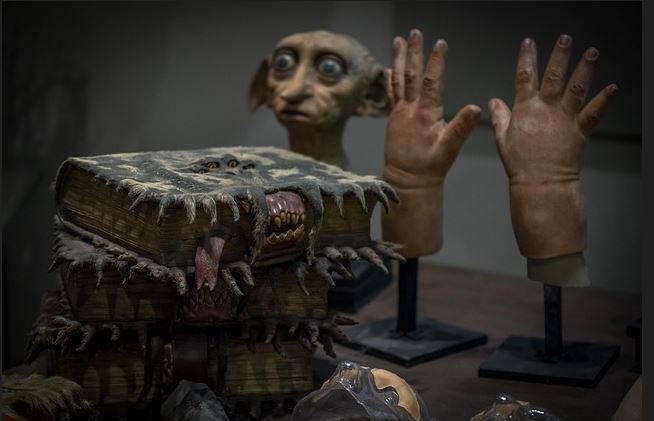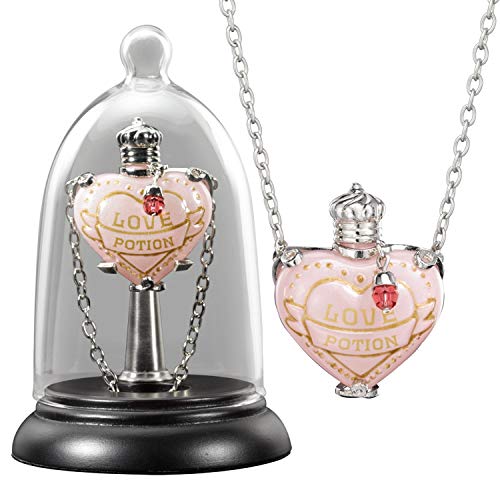The world of Harry Potter is not just a phenomenon among readers and film-goers; it's a fascinating exploration of magic that has enchanted fans for decades.
Among its most captivating aspects are the Harry Potter spells, a core element that adds depth and excitement to this magical universe. These spells, ranging from simple charms to complex curses, have not only played pivotal roles in Harry's adventures but also sparked the curiosity of fans eager to discover and understand more about their origins and meanings.
Who Doesn't know these Famous Harry Potter Spells?
With spells like "Wingardium Leviosa" and "Sectumsempra," J.K. Rowling has woven a rich tapestry of magical lore that mirrors, in some aspects, the spells and traditions found in real-life practices of Witchcraft and Wicca, blending the fictional with the mystical in a way that resonates with a vast audience.
This article will delve into some of the most iconic Harry Potter spells, from the levitation charm that teaches us the importance of pronunciation—'leviosa', not 'leviosar'—to the darker, more powerful spells that showcase the depth of Rowling's magical world.
We will explore the summoning charm "Accio," which has practical applications even beyond the pages of the Harry Potter books, perhaps reminiscent of the way figures in Witchcraft and Wicca might reach out to the universe to draw something towards them. Additionally, the memory charm "Obliviate" and the boggart-banishing spell "Riddikulus" will be discussed, revealing their meanings and the clever ways they are employed within the narrative.
Through an examination of these spells and their underlying principles, we embark on a magical journey that highlights the enchanting overlap between the imaginative world of Harry Potter and the historic practices of magic, offering a deeper understanding of why these spells have captivated the imagination of so many.

Wingardium Leviosa - The Levitation Charm
Purpose and Usage
Wingardium Leviosa, often introduced to first-year students at Hogwarts, is a foundational charm that exemplifies the use of magic for levitation and manipulation of objects. This spell is pivotal not only in educational settings but also in practical scenarios, where it serves to lift and move objects with ease, defying gravity [8]. Its utility extends beyond mere levitation, assisting in tasks ranging from simple classroom exercises to complex puzzle-solving in adventures. Notably, this charm is essential in non-combat situations, particularly in exploration and handling physical obstacles [9].
Notable Instances
Throughout the Harry Potter series, Wingardium Leviosa has had its moments of critical utility and dramatic effect. One of the most memorable instances was during Ron Weasley's first year at Hogwarts, where he famously used the charm to levitate a troll's club, a feat that showcased the spell's capability to lift objects far heavier than what a young wizard could physically manage [8]. Another significant usage was by Hermione Granger, who was the first in her class to master the charm, demonstrating its effectiveness and her proficiency in charms at an early stage [8].
Technique
The correct execution of Wingardium Leviosa requires more than just vocal command; it demands concentration and precise wand movements. As taught by Professor Flitwick and later practiced in the game Hogwarts Legacy, the charm involves a specific pattern and rhythm in wand handling, which, when done correctly, allows the caster to manipulate objects with precision. The spell's effectiveness varies with the caster's skill and the object's weight, making it a versatile tool in a wizard's magical arsenal [3].
The charm's connection to practices found in Witchcraft and Wicca can be seen in its fundamental manipulation of the elements and objects, akin to the way practitioners of these paths engage with their surroundings to alter or interact with the physical world. This similarity highlights the universal theme of interaction with the natural world, a core aspect of many magical practices.
Accio - The Summoning Charm
Purpose and Usage
The Summoning Charm, known by its incantation "Accio," is a fundamental spell in the wizarding world, allowing the caster to summon objects directly to their hand. It works on objects in direct sight and those out of view, provided the caster vocalizes the name of the object after the incantation or uses nonverbal casting [9]. This charm is particularly useful for retrieving items quickly and has applications that extend beyond simple convenience, reflecting practices similar to those in Witchcraft and Wicca where objects are summoned or energies are called upon through focused intent.
Notable Instances
"Accio" has been crucial in various situations throughout the Harry Potter series. Harry Potter famously used this charm during the First Task of the Triwizard Tournament to summon his broomstick, enabling him to navigate the challenges posed by a Hungarian Horntail [8]. Furthermore, the charm was employed in critical moments such as summoning the Triwizard Cup, which was a Portkey during his confrontation with Lord Voldemort [8]. These instances highlight the charm's significance in both everyday tasks and pivotal moments within the series.
Technique
Mastering the Summoning Charm requires clarity of thought and precision. The object must be clear in the caster's mind, and while the distance to the object can increase the difficulty of the spell, a well-practiced wizard like Hermione Granger claims that distance shouldn't matter with proper concentration [9]. The charm also involves specific wand movements and the vocalization of the incantation, which can be bypassed by skilled wizards through nonverbal casting. Notably, certain objects, such as Horcruxes or those heavily protected by magic, are immune to this charm, reflecting its limitations within magical law.
The charm's technique and its foundational role in magical education, taught as early as the fourth year at Hogwarts, also mirror the structured learning approaches seen in traditional Witchcraft, where mastering the elements and the focused intent are key to effectively performing spells [8].
$79.00
4.48 out of 5 starsOfficially Licensed Harry Potter Weasley Wand Collection - 17in
Channel the magical power of the Weasley family with this officially licensed Harry Potter wand collection in 17 inches
Product information
Product Review Score
Product links
Obliviate - The Memory Charm
Purpose and Usage
The Memory Charm, known by its incantation "Obliviate," is primarily used to erase specific memories from an individual's mind. This charm is frequently employed within the wizarding world to maintain secrecy, especially to ensure that Muggles remain unaware of the magical realm. The Ministry of Magic utilizes Obliviators to perform this charm to prevent breaches of the Statute of Secrecy, such as when a Muggle witnesses magical activity.
Notable Instances
Gilderoy Lockhart, infamous for his misuse of the Memory Charm, used it extensively to erase the memories of accomplished wizards and witches, claiming their achievements as his own in his publications. His most dramatic failure occurred when he attempted to use the charm with a damaged wand, resulting in his own permanent memory loss, making him a long-term resident of the Janus Thickey Ward at St Mungo's. Similarly, Barty Crouch Sr. used a Memory Charm on Bertha Jorkins, which was overly potent and caused irreversible damage to her memory [11].
Technique
The effectiveness of the Memory Charm depends significantly on the caster’s skill. For example, Lockhart, who had honed his ability to perform this charm, could erase memories effectively until an accident caused the charm to backfire disastrously [8]. The charm involves pointing the wand at the target while clearly pronouncing the incantation "Obliviate." Incorrect application can lead to partial or excessive memory loss, or in severe cases, permanent brain damage [8].
The Memory Charm's connection to Witchcraft and Wicca can be seen in its ability to alter perception and memory, akin to various practices in these traditions that involve changing one's consciousness or reality, albeit through different rituals and intents. This highlights a thematic link between the fictional magic of Harry Potter and real-world magical practices, where altering awareness or memory plays a role in broader magical workings.
Riddikulus - The Boggart-Banishing Spell
Purpose and Usage
The Riddikulus charm is a defensive spell specifically designed to combat Boggarts, creatures that manifest as the caster's worst fears. By transforming these fears into humorous images, the charm helps to neutralize the Boggart's ability to terrorize. It's crucial that the caster visualizes a funny outcome vividly, as the charm's effectiveness hinges on this mental image [12][13].
Notable Instances
This charm has been notably used in several critical moments within the Harry Potter series. For instance, during a Defence Against the Dark Arts class, Professor Lupin instructs his students on how to handle a Boggart, leading to memorable scenes where the students confront their fears in a controlled environment. The charm is also strategically used by Harry in the Triwizard Tournament to overcome a Boggart disguised as a Dementor, showcasing its practical application under pressure [12][14].

Technique
To successfully cast Riddikulus, the wizard must not only pronounce the incantation but also match it with the correct wand movement and a strong concentration on the humorous transformation of their fear. The challenge lies in maintaining focus in the face of fear, a common stumbling block for those new to facing Boggarts. The spell's outcome varies, sometimes causing the Boggart to vanish or simply change form, depending on the caster's skill and intent [12].
In exploring the similarities between the Riddikulus charm and spells in Witchcraft and Wicca, both practices emphasize the power of the mind and the importance of intention. Just as witches might use visualization or laughter to shift energy and dispel negativity, wizards use Riddikulus to transform fear into something laughable, thereby disempowering it. This cross-cultural magical practice highlights a universal magical principle: overcoming fear through humor and mental strength.
Sectumsempra - The Severing Charm
Purpose and Usage
Sectumsempra, a spell of significant potency, was created by Severus Snape during his time at Hogwarts, identified by his moniker "The Half-Blood Prince." Initially intended for use against his enemies, this curse acts like an invisible sword, slashing its target from a distance and causing severe hemorrhaging [8][15]. Its name, derived from the Latin words "sectum" and "semper," translates to "always cut" or "permanently sever," indicating its relentless cutting effect [15][16].
Notable Instances
One of the most dramatic uses of Sectumsempra occurred when Harry Potter, unaware of the curse's true nature, used it against Draco Malfoy in the sixth-floor boys' bathroom. The spell inflicted serious wounds on Malfoy, leading to significant blood loss that could have been fatal had Snape not intervened promptly to administer healing [8][15]. This incident underscores the spell's dangerous potential when used without full knowledge of its effects.
Technique
The effectiveness of Sectumsempra is highly dependent on the precision of the caster's wand movements. The curse mimics the trajectory of the wand, making it crucial for the caster to maintain control to avoid unintended consequences [8][15]. Despite its power, the spell has limitations; it proved ineffective against non-living entities like Inferi, as they do not react to physical trauma in the same way living beings do [1][15].
In comparing Sectumsempra to spells used in Witchcraft and Wicca, both practices emphasize the importance of intent and precision. Like many spells in these traditions, the outcome is tied to the practitioner's focus and control over their own power, a theme that resonates with the narrative of Sectumsempra where misuse can lead to dire consequences.
The Reception and Perception of Harry Potter Magic Spells Among the Modern Pagan/Wiccan Community
Overview of Magical Elements in the Harry Potter Universe
The Harry Potter series, written by J.K. Rowling, is renowned for its rich depiction of a magical world, complete with spells, incantations, and rituals. Characters in the series utilize a variety of spells for different purposes, such as "Lumos" to produce light, "Expelliarmus" to disarm an opponent, and "Avada Kedavra" to kill. These spells often require the use of wands and specific incantations, which are sometimes derived from Latin or pseudo-Latin phrases. Additionally, the series portrays rituals and potions, such as the creation of the Philosopher's Stone and the brewing of Polyjuice Potion, which allow for transformation and immortality, respectively. The magical elements are represented as part of a structured and academic discipline, taught in the fictional Hogwarts School of Witchcraft and Wizardry.
Response of Practicing Witches and Modern Pagan/Wiccan Community 
Practicing witches and members of the modern Pagan/Wiccan community have exhibited varied responses to the magical elements in the Harry Potter series. Many appreciate the creativity and entertainment value of the books, but they also recognize significant differences between Rowling's fictional magic and their real-world practices.
According to Patti Wigington, a Pagan author and educator, the magic in Harry Potter "isn't real" and differs fundamentally from Wicca or modern-day witchcraft Real-world magic in these traditions is often seen as a natural force, rooted in the manipulation of energy and nature, rather than a set of incantations and wand-waving.
Some practitioners argue that the portrayal of magic in Harry Potter is misleading. They note that while Rowling’s spells are instantaneous and often spectacular, real-world magical practices involve meditation, ritual, and a deep connection to the natural world. For instance, Wiccan rituals are typically intricate and require significant study and training to perform effectively. Moreover, Wiccans and Pagans emphasize ethical considerations, such as the Wiccan Rede ("An it harm none, do what ye will"), which are absent in the fictional universe of Harry Potter.
Impact on Public Perception and Understanding
The Harry Potter novels and movies has had a profound impact on popular culture and the lives of many people around the world. public perceptions of witchcraft and Wiccan practices. For many readers, especially younger ones, the books serve as an introduction to the concept of magic and witchcraft. This has led to a heightened interest in and curiosity about real-world magical traditions. However, there is a concern that the fantastical portrayal of magic in the series may contribute to misunderstandings about actual Wiccan and Pagan practices.
On the positive side, the series has opened up dialogues about magic and witchcraft, making them less taboo and more mainstream. This positive visibility can lead to a greater acceptance and understanding of modern Pagan and Wiccan beliefs. However, there is also the risk of trivializing these practices by equating them with the fictional magic of Harry Potter. Evangelical groups have expressed concerns that the series might encourage young readers to explore occult practices, though Rowling has clarified that Wicca is not practiced at Hogwarts and that her concept of magic is distinct from real-world traditions.
Assessment of Authenticity and Cultural Significance
In assessing the authenticity and cultural significance of the magical spells and other elements in the Harry Potter series, it is clear that while the books are based on extensive research into myths, legends, and early occult writings, they remain works of fiction. The magical practices depicted in the series are not meant to accurately represent real-world witchcraft but rather to create an engaging and imaginative narrative.
The cultural significance and impact of the Harry Potter series cannot be overstated. It has inspired a generation of readers to believe in the possibility of magic and has reignited interest in folklore and mythology. While the series may not provide an accurate representation of Wiccan or Pagan practices, it has nonetheless contributed to a broader cultural conversation about these traditions. From a cultural perspective, the series has had a largely positive effect by demystifying and destigmatizing the concept of magic, even if it occasionally leads to misconceptions.
In conclusion, the Harry Potter series, while a work of fiction, has had a significant impact on public perceptions of magic and witchcraft. Practicing witches and members of the modern Pagan/Wiccan community recognize the differences between Rowling's fictional magic and their real-world practices but appreciate the series for its creativity and its role in fostering interest in magical traditions. The books have helped to make discussions about witchcraft more mainstream and have inspired many to explore the rich tapestry and rabbit hole of myths and legends that underpin modern Pagan and Wiccan beliefs. While there are risks of trivialization and misunderstanding, the overall effect of the Harry Potter series on public understanding of witchcraft has been largely positive, opening minds to the possibility of magic in the world around us.

Harry Potter Spells Deserve their Place in Modern Witchcraft
Throughout this exploration of Harry Potter spells and their enchanting connections to the historic practices of Witchcraft and Wicca, we have uncovered the remarkable depth and intricacy J.K. Rowling injected into her magical universe.
The analysis unveils a tapestry where fictional enchantments like "Wingardium Leviosa," "Accio," "Obliviate," "Riddikulus," and "Sectumsempra" resonate with the real-world magical traditions of spellcasting, intention, and transformation.
These parallels not only enrich our understanding of the Harry Potter series but also highlight the universal appeal of engaging with the mystical, showcasing the power of narrative to echo timeless practices of magic.
Such insights allow fans and enthusiasts to appreciate the stories on a deeper level, seeing them not just as tales of fantasy but as narratives woven with threads of ancient magical wisdom. The exploration encourages a broader reflection on how this vibrant interplay between the imagined and the real impacts both fandom and the practice of Witchcraft and Wicca, igniting a spark of curiosity and wonder.
As we conclude this journey, we're reminded of the enduring charm of Harry Potter's universe and the spell it has cast over the world, bridging the wide gap between marvelous fiction and everyday reality in a way that continues to captivate and inspire.
$59.91
$56.05
4.24 out of 5 starsNoble Collection Harry Potter Love Potion Pendant 18in
A magical accessory for the true Harry Potter fan
Product information
Product Review Score
Product links
FAQs
What are the 77 spells featured in Harry Potter and their functions?
The Harry Potter series introduces a total of 77 spells, each with unique effects and purposes within the magical world.
Which spell in Harry Potter induces happiness?
The Cheering Charm is a spell in Harry Potter designed to make the recipient feel exceptionally happy. However, if applied excessively, it could lead to uncontrollable fits of laughter. This charm is possibly related to the counter-charm used to cure hiccoughs.
What is a notable magical spell in Harry Potter?
One of the most renowned spells in the Harry Potter universe is Expecto Patronum. This powerful defensive charm summons a Patronus, a manifestation of positive energy, which protects the caster from dark forces by harnessing their positive emotions.
Which spell is considered the most powerful in Harry Potter?
The Killing Curse, known as Avada Kedavra, is undoubtedly the most potent and malevolent spell in the enchanting world of Harry Potter. With a mere flick of the wand, it releases a dazzling jet of emerald light, capable of snuffing out life in an instant. However, it is crucial to note that the curse's lethal effect only manifests if the caster possesses a genuine intent to kill. Tragically, it was this very curse that brought about the untimely demise of Harry's beloved parents, forever altering the course of his life.
References
[1] - https://harrypotter.fandom.com/wiki/Levitation_Charm
[2] - https://hogwarts-legacy.fandom.com/wiki/Wingardium_Leviosa
[3] - https://gamerant.com/hogwarts-legacy-how-to-learn-wingardium-leviosa/
[4] - https://www.youtube.com/watch?v=2Aqcw_CiY1g
[5] - https://www.twinkl.com/teaching-wiki/harry-potter-spells
[6] - https://harry-potter-compendium.fandom.com/wiki/Summoning_Charm
[7] - https://www.wizardingworld.com/features/magical-spells-we-first-learned-in-philosophers-stone
[8] - https://harrypotter.fandom.com/wiki/List_of_spells
[9] - https://dingo.sbs.arizona.edu/~hharley/PDFs/Blog/DiesingWandW.pdf
[10] - https://harrypotter.fandom.com/wiki/Summoning_Charm
[11] - https://www.reddit.com/r/harrypotter/comments/csw0mq/how_does_the_spell_accio_work/
[12] - https://harry-potter-compendium.fandom.com/wiki/Riddikulus
[13] - https://harrypotter.fandom.com/wiki/Boggart-Banishing_Spell
[14] - https://en.wikibooks.org/wiki/Muggles%27_Guide_to_Harry_Potter/Magic/Riddikulus
[15] - https://www.quora.com/How-powerful-is-the-Sectumsempra-spell-in-Harry-Potter







